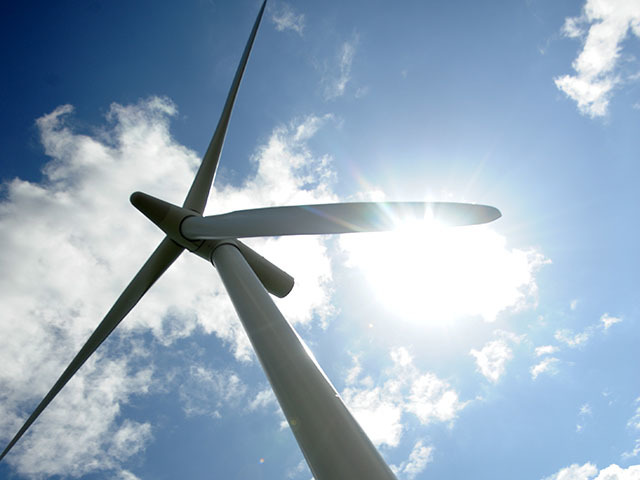
Onshore wind schemes are the least attractive and most difficult to develop renewable energy technologies, a new survey has found.
The Energy Index 2013, compiled by land consultancy Carter Jonas, ranks onshore wind turbines the most controversial energy generators in comparison to biomass, hydro, solar and anaerobic digestion.
Both single 500kW turbine developments and larger 10MW windfarms have the lowest planning approval rates out of all technologies and take the longest length of time to develop, according to the report.
The development timeframe for a single 500kW turbine can be as long as 26 months, while a 10MW windfarm can take up to five years to get up and running.
This compares to a 50kW roof-mounted solar scheme – ranked the most attractive technology in the report – which requires no planning permission and takes around two months to get off the ground.
Planning approval success rates are significantly lower for wind schemes – 56% for 10MW windfarms and only 50% for a single 500kW turbine.
A 150kW biomass boiler, ranked the second most attractive in the report, has a planning approval success rate of 93%.
According to Andrew Watkin, head of energy at Carter Jonas, the site-specific nature of renewable projects leaves wind schemes facing some of the biggest obstacles.
“People seem to think wind turbines are easy, but it’s a very complex development project with a lot of constraints,” he said.
The key hurdles to development were grid connection, planning and access to finance, he added.
Despite these challenges, the report found wind schemes were comparatively economical compared to other technologies with some of the lowest annual operating costs.
However, Linda Holt, spokesperson for anti-wind lobby Scotland Against Spin, said wind was the least economical because quoted costs did not include the cost of back-up systems and grid upgrades required to transport the electricity produced.
Scottish Renewables senior policy manager Joss Blamire said: “This report confirms what the industry already knows: successful energy projects continue to offer significant opportunities for developers, investors and landowners.
“Scotland’s outstanding natural resources mean that if the right technologies are developed in the right location, we can continue to develop a diversified portfolio of renewables generation.”
Recommended for you
